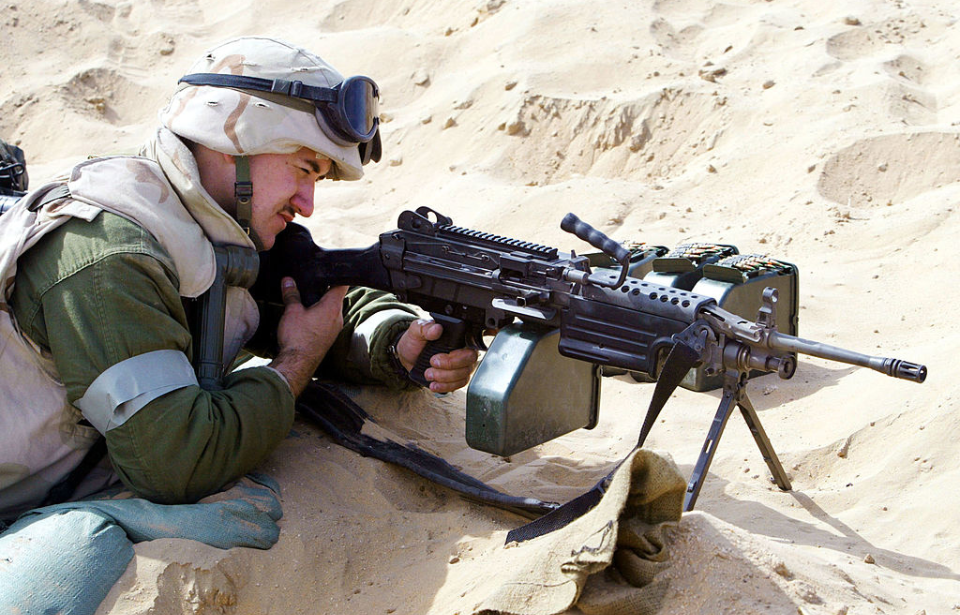The M249 Squad Automatic Weapon (SAW) machine gun – also known as the Light Machine Gun, 5.56 mm, M249 – is a critical tool for troops on the battlefield. Its design is tailored for reliability and firepower, making it a key asset in the heat of combat. Originating from the need to give infantrymen a lightweight, yet powerful automatic weapon, it has evolved over the years into a sophisticated piece of military hardware.
Tracing the roots of the M249 SAW machine gun
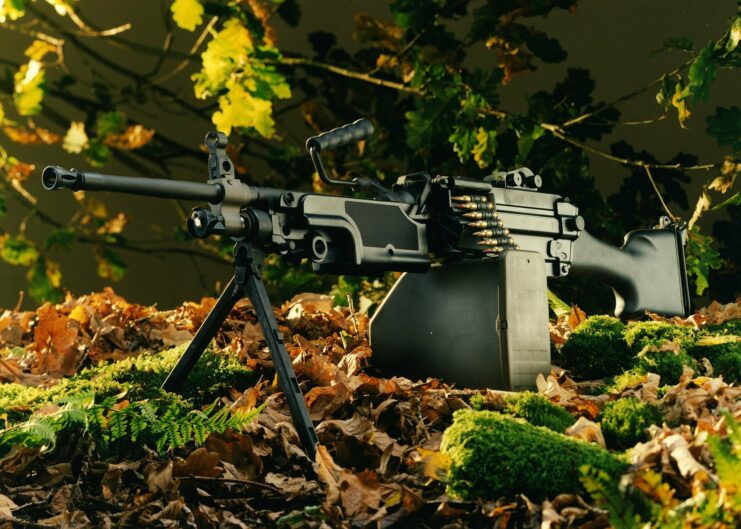
The concept of a machine gun that could be operated by a single soldier was, at one time, revolutionary. The development of such weaponry aimed to increase firepower while maintaining mobility on the battlefield. This innovative approach led to the creation of the M249 SAW machine gun, which combined the rapid-fire capabilities of heavier machine guns with the portability required for use by infantry units.
Taking inspiration from the Belgium-manufactured FN Minimi that’s been in service since 1980, the aim was to replace the older M60 and M2 Browning machine guns, which required two people to operate, given their weight. The M14 and M16 rifles were available, but they weren’t designed for a high rate of fire and jammed during prolonged periods – not a problem troops wanted to suffer in the heat of battle.
Plans for a new light machine gun capable of firing the 5.56 mm round were introduced in 1968, with the US Army approving the development of a “Squad Automatic Weapon” two years later. By the time trials occurred in 1974, several prototypes were vying for the contract, including the one based on the FN Minimi. After several revisions and tests, this was the contender chosen.
What makes the M249 SAW machine gun stand out?
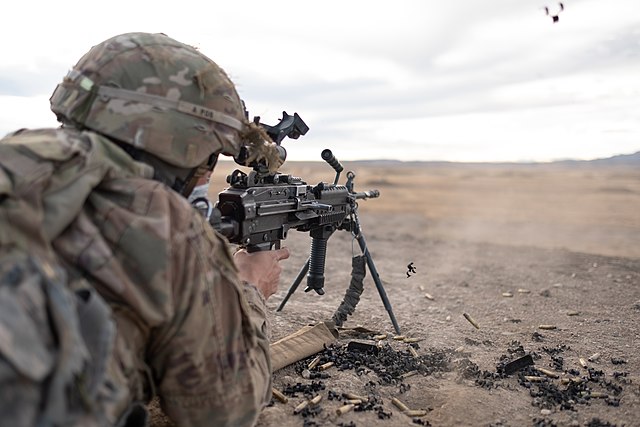
The M249 SAW machine gun is renowned for its versatility in various combat situations. It has a gas-operated, open bolt firing mechanism, which significantly contributes to its consistent performance in the heat of battle. Its ability to fire a significant number rounds (up to 850 a minute) without compromising accuracy or functionality is a testament to its superior engineering.
The adaptability of the weapon is further exemplified by its compatibility with different types of ammunition. While designed to fire the 5.56 x 45 mm NATO, the M249 can also chamber the M200 Blank, the M199 Dummy, the M856 Tracer and the M855 Ball.
Another useful aspect of the machine gun is its ergonomic design, ensuring ease of use and maneuverability. The placement of controls and the inclusion of a collapsible stock enhance user comfort and facilitate quick adjustments in the field. As well, the integration of advanced sighting systems further augments its effectiveness, allowing for targeting over significant distances.
That being said, while it is ergonomic, the M249 isn’t necessarily the lightest and is actually considered heavy for a light machine gun, weighing 17 pounds by itself and a whopping 22 pounds when paired with its ammunition box and 200-round belt.
Several improvements have been made over the years
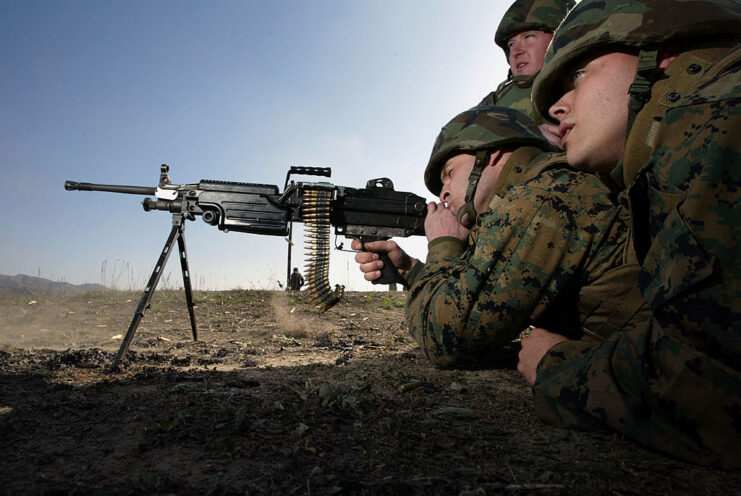
The M249 SAW machine gun entered service with the US Army in 1984 and was adopted by the Marine Corps the following year. Over the years, it’s undergone modifications and improvements, adapting to the needs of modern warfare. Among the issues noted were how hot the exposed barrel got, not to mention the weapon’s sharp metal edges, both of which presented a hazard to troops. This forced the government to suspend funding for the weapon until these problems were rectified.
Several variants have since been developed, with the Mk 46 and 48 making their biggest mark. The former was adopted by the United States Special Operations Command (USSOCOM) and featured a lot of changes that made the machine gun lighter and easier to use, just without the collapsible buttstock. The Mk 48 was similar, but with the ability to fire the 7.62 x 51 mm NATO.
Training soldiers on how to use the M249 SAW machine gun
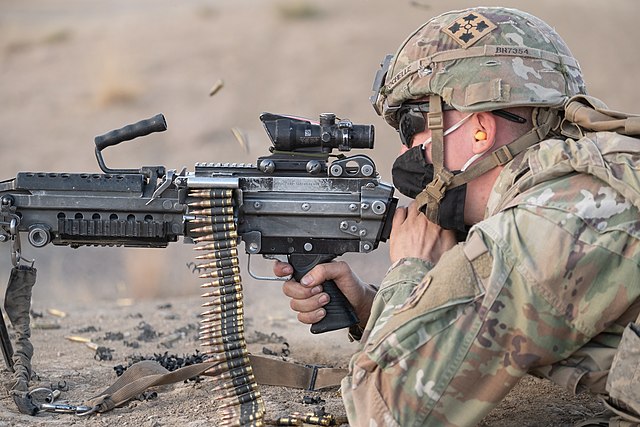
Preparing service members to effectively use of the M249 SAW machine gun is a process that demands precision and a deep understanding of the weapon’s unique capabilities, and it requires operators to undergo a comprehensive training program.
These lessons not only cover the basic mechanics and maintenance of the machine gun, but they also delve into advanced tactical employment. Troops learn to assess situations quickly, deciding when the weapon’s rapid rate of fire can be most effectively used to provide cover or suppress enemy positions. The training also emphasizes mobility, allowing operators to move swiftly with it to ensure they can respond to changing battlefield conditions with the necessary firepower.
The training curriculum is designed to instil confidence in service members across the US Army and Marine Corps. Simulated scenarios, ranging from urban warfare to open terrain battles, prepare them for the diverse environments they might face. Throughout these exercises, emphasis is placed on teamwork and communication, as the M249 plays a key role in coordinated assaults and defense.
By the end of their training, troops aren’t just proficient in operating the weapon, but are also adept at integrating its use within their unit’s strategy, ensuring they can leverage its capabilities to the fullest.
M249 SAW machine gun in combat
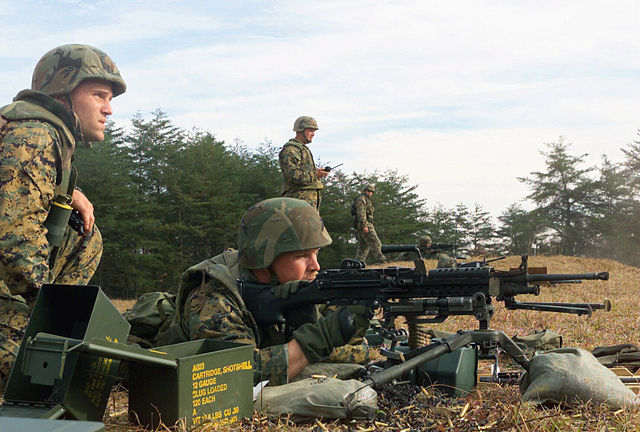
The M249 SAW machine gun has become a staple within military units across the world. It caters to the demanding requirements of modern combat, offering troops an unmatched level of support in battle, and its adaptability allows for its use in a variety of combat scenarios, from open-field engagements to close-quarters battles. As well, the weapon’s high rate of fire and substantial magazine capacity ensure sustained barrages can be laid down, suppressing enemy forces and allowing for maneuvers to occur.
The machine gun has seen action across various conflicts, most notably the Gulf War, the War in Afghanistan and the Iraq War. In the former, the weapons saw little use, due to their tendency to get clogged by sand, but when they did see action, they were typically used to provide cover fire. By the time the War in Afghanistan broke out, a collapsable buttstock had been installed to reduce the weapon’s overall size.
In the dense jungles of South America, the M249 serves as a tool for small units, offering the firepower necessary to penetrate thick vegetation and engage adversaries hidden within. Meanwhile, in the Middle East, it performs convoy protection and defensive operations. Its long-range capabilities allow for the establishment of perimeter defenses around camps and during patrols, deterring potential threats from a distance.
Replacements have been named
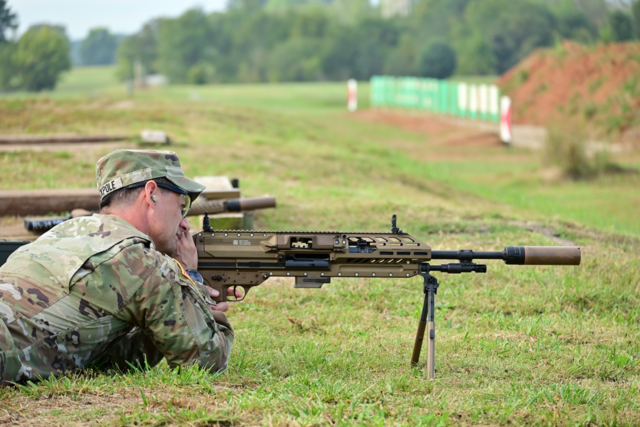
As with all aging military equipment and technology, the time comes to replace it with newer, more advanced machinery. The US Marine Corps announced in 2009 that it had decided to partially replace the M249 SAW machine gun with M27 Infantry Assault Rifle, a newer Squad Automatic Weapon.
The US Army declined to adopt the M27, citing its perceived lower firepower and overall effectiveness. Instead, a call was put out to manufacturers for a new weapon that:
- Weighed, at the most, 12 pounds.
- Was compatible with next-generation Small Arms Fire Control systems.
- Could engage targets as far away as 600 meters.
- Could suppress targets 1,200 meters away.
- Was only 39 inches long.
More from us: AK-15: The Russian Assault Rifle That Traces Its Origins Back to the AK-47
SIG Sauer won the contract in April 2022 with its XM250, which began fielding with the 1st Battalion, 506th Infantry Regiment, 101st Airborne Division in March ’24. The previous year, it had undergone tests with the 101st Airborne and the Army Rangers. Based on reports, it appears the new SAW machine gun will see service alongside the M249, at least for a little bit, as FN Herstal received a contract that’s expected to be fulfilled by 2025.
